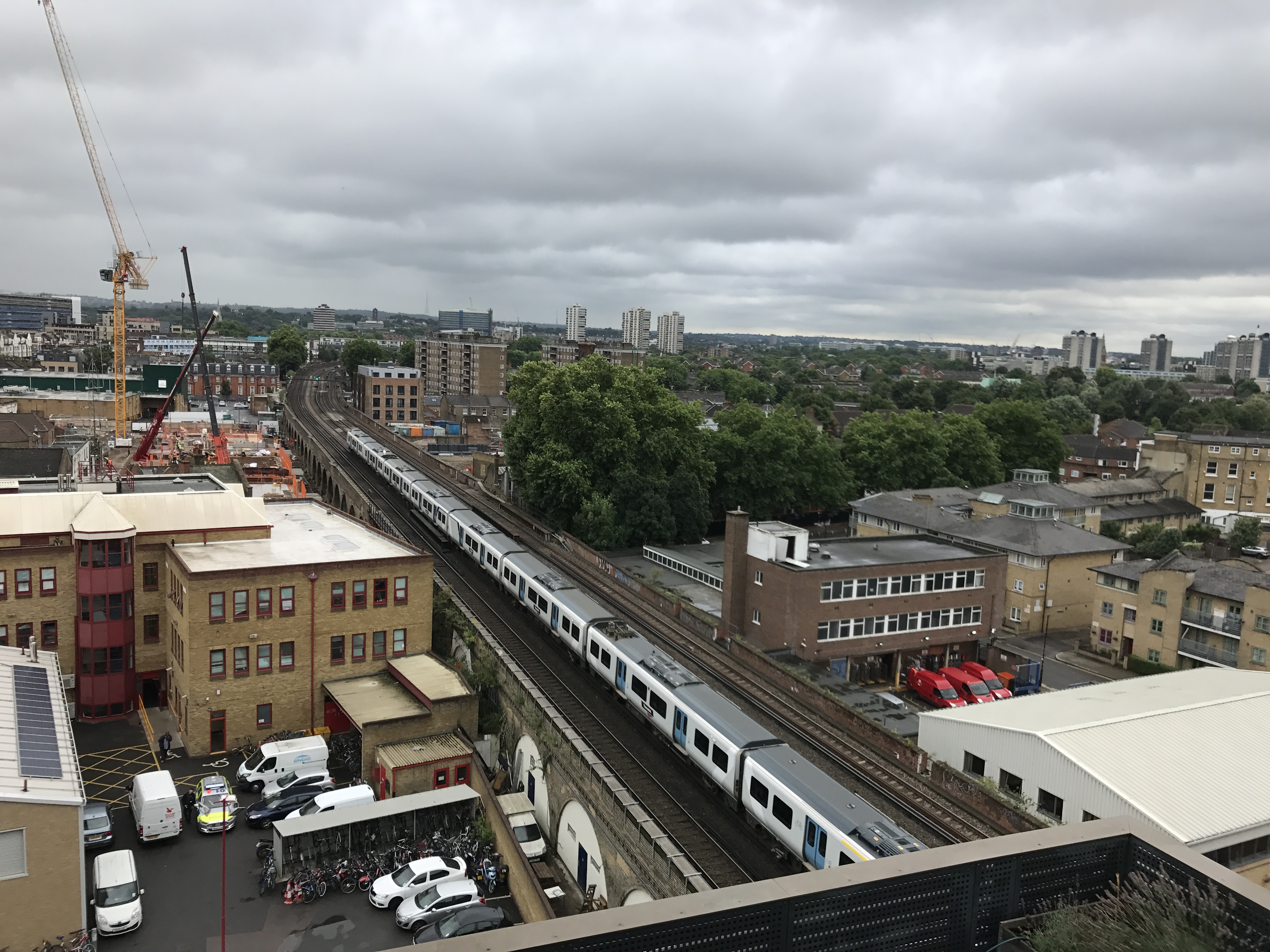United Kingdom, London
FC-01x Future Cities (Self-Paced) - Exercise 1 : "Making the Invisible - Visible"

Uploaded on 2017-07-24 by Rob
Information visible in this photo: - The train which forms part of the city's transport network; - The post delivery office (on the right hand side) that is an essential service of the city; - The police station (on the left hand side) which forms part of the emergency services; - The various forms of housing from different eras in the city's development; - The different vehicles (cars, vans, bicycles) that use the city's roads; - The construction of a new building on the left at the back; - The green park on the right at the back; - The city air which impacts the health of the citizens; - The people (e.g. working at the post office) Two bits of "invisible information" that can be extracted out of visible information in this photo 1. Commuter information and preferences could be extracted from data generated on train usage. For example, the number of people on the train at different times of the day could inform us of peak commuting times. Likewise, fare categories (student, adult, OAP, other concession) could allow us to understand the users of the train network, when they travel, where they travel from / to etc.; 2. Air quality could be measured by sensing the level of substances in the city air. This could be done in different districts to understand how the air quality varies. Elaborating on point 2 above and turning it into knowledge: A comprehensive profiling of the air quality in different areas of the city can become valuable knowledge when combined with information on the urban landscape (e.g. number of polluting buildings like factories, proximity to main roads, proximity to green spaces) and medical advice on what levels of pollution are harmful to humans. Obtaining this knowledge (which would preferably be updated by real-time sensing) would help urban planners to improve air quality in existing areas of the city, and to build new areas of the city that ensure air quality can be maintained below harmful levels